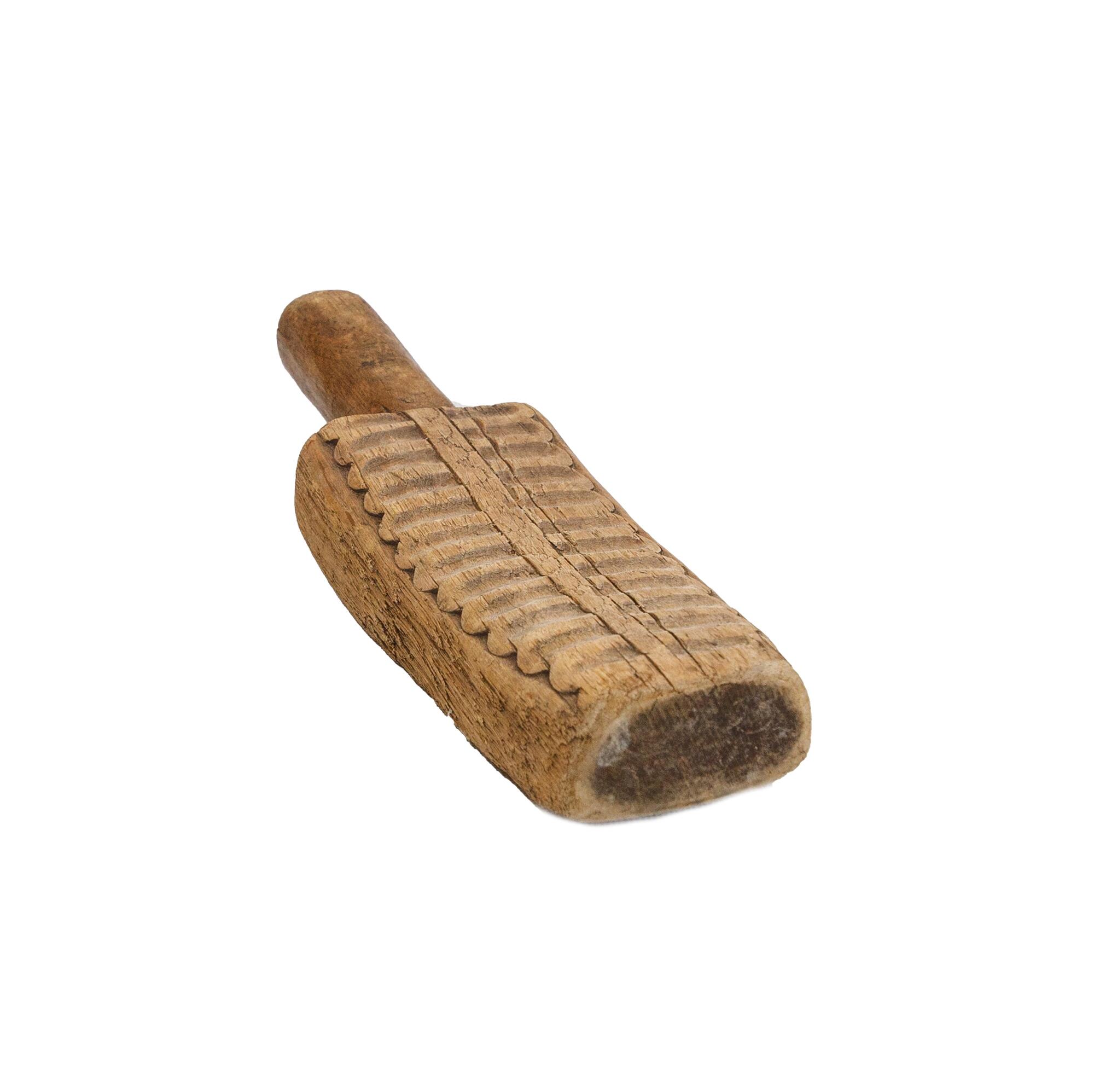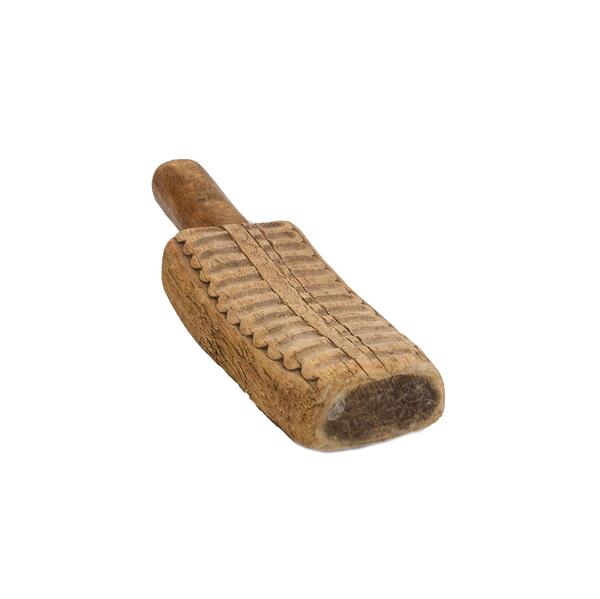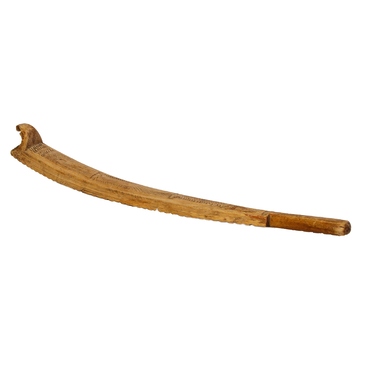A wooden valyok was used for beating canvas while washing, for softening new canvas, as well as for beating flax and hemp seeds out of seed bolls. Zoya Nalogina, a resident of the village of Shoksha, Temnikovsky District, Tambov Province, donated this item to the museum.
Valyok is a wooden rectangular bar of a slightly concave shape with a cylindrical handle. It had different names in different villages — most commonly “valyok” or “kolotushka” (mallet), but also “varta”, “lapta”, “portomoynik” and “pralnik.” Valek was made of hard wood, such as birch, linden or aspen. Archaeological finds suggest that the form of this tool remained unchanged from the 10th to the 19th century.
Valyok was used in the following way: the woman placed her laundry on the footbridge, took the tool by the handle and with force beat the bottom surface of wet clothes until the plate of the valyok squeezed the liquid out of them. Then she poured a solution of lye over the laundry and pounded it again with force. The items beaten in this way were rinsed in the river, and in winter — in an ice-hole.
Doing laundry was a women’s job. People used to say:
Valyok is a wooden rectangular bar of a slightly concave shape with a cylindrical handle. It had different names in different villages — most commonly “valyok” or “kolotushka” (mallet), but also “varta”, “lapta”, “portomoynik” and “pralnik.” Valek was made of hard wood, such as birch, linden or aspen. Archaeological finds suggest that the form of this tool remained unchanged from the 10th to the 19th century.
Valyok was used in the following way: the woman placed her laundry on the footbridge, took the tool by the handle and with force beat the bottom surface of wet clothes until the plate of the valyok squeezed the liquid out of them. Then she poured a solution of lye over the laundry and pounded it again with force. The items beaten in this way were rinsed in the river, and in winter — in an ice-hole.
Doing laundry was a women’s job. People used to say:



